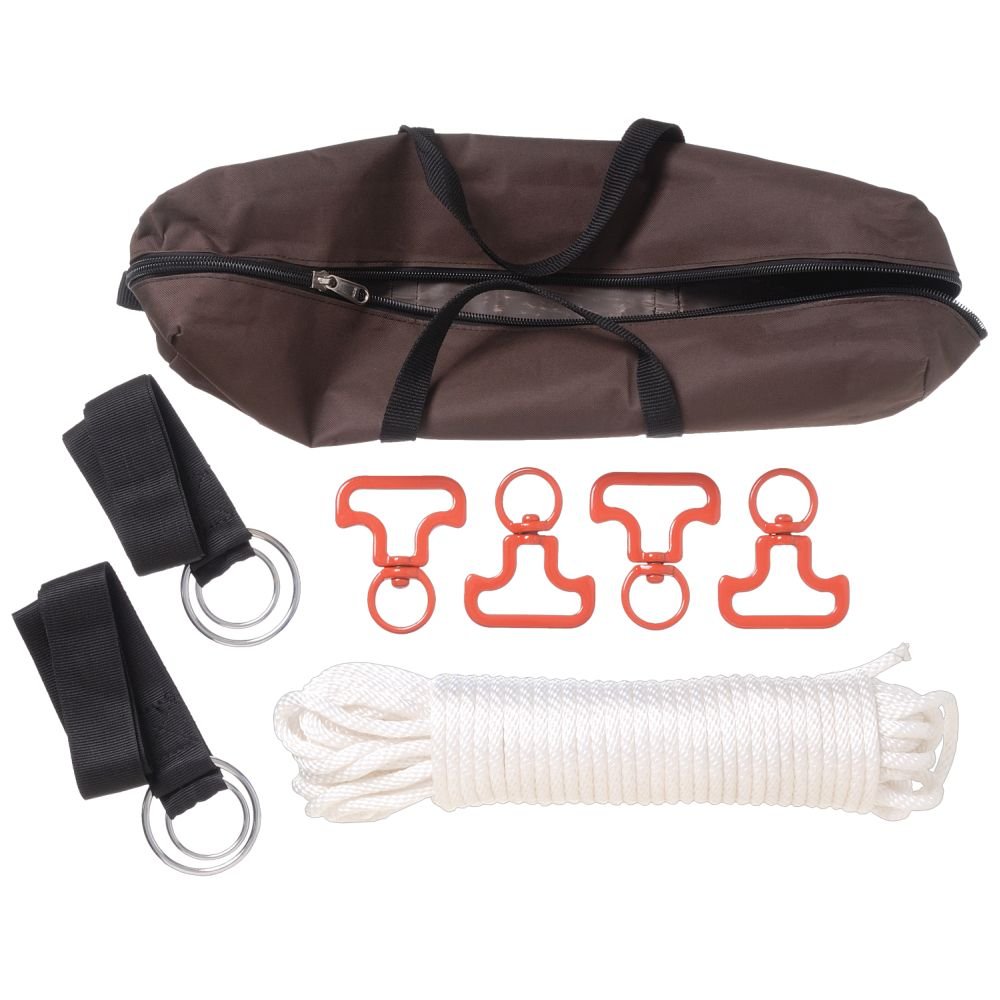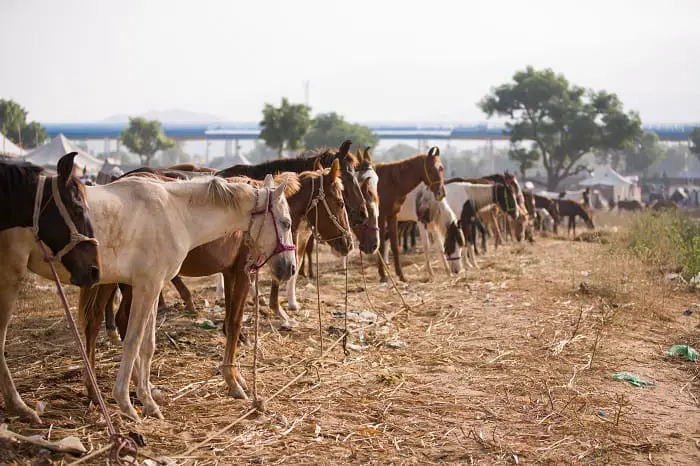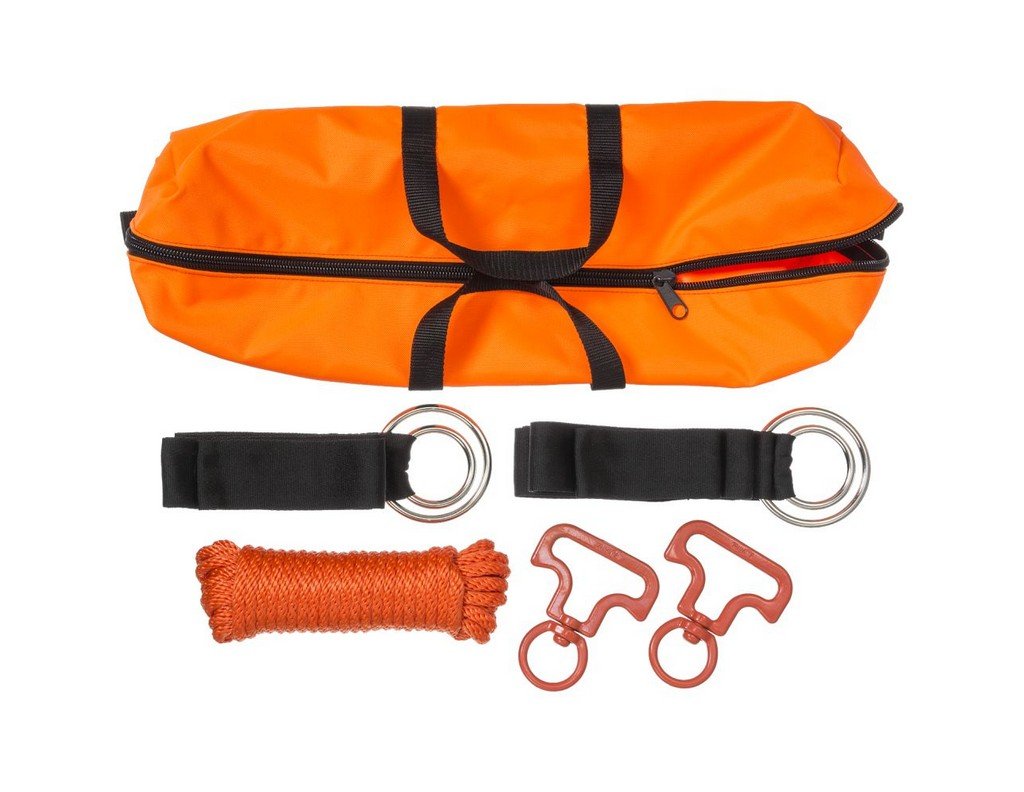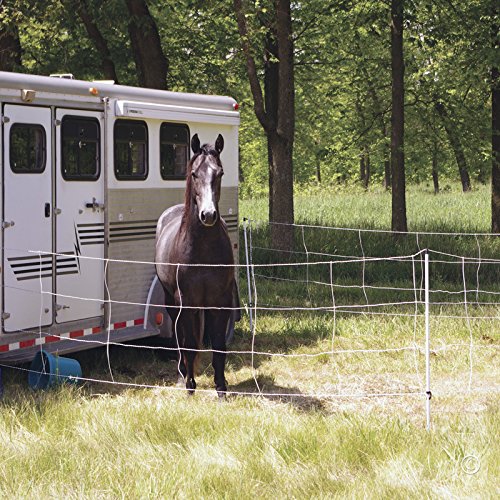Last Updated on February 10, 2022
Are you an avid outdoorsman that loves camping and that loves horses? Ever think about taking your horses camping with you? You should consider portable horse corrals. Sounds like a lot of fun! But, taking your horses on a camping trip takes a lot of planning and preparation.
One of the biggest decisions you have to make before taking your horse camping is what to do with your horse when you’re not riding. Horses can’t sleep in tents as people can, and horses often don’t understand that they are settling in for the night.
There are two primary ways of safely bedding your horse in either for the night or for a break from the trails. These are picket lines and portable fencing. Both are considered forms of portable “horse corrals,” or temporary horse storage.
In this article, I will be reviewing popular picket lines and portable fencing, types of horse corrals for camping. After reading these reviews, I hope you are left with a good impression of which portable horse corral for camping will best suit you, your camping buddies, and your horses.
Some of the most popular picket lines are the Tough-1 Two-Horse Picket Line, the Tough-1 Four-Horse Picket Line, the EZ Picket picket line, and the Cashman’s Picket Line Kit. Some of the most popular portable pastures are Semi-Permanent Horse Quikfence, SmartPak 12’x12’ Travel Stall, and Carri-Lite Portable Corral.
Portable Horse Corrals, Picket Lines
Picket lines are a more affordable fencing option for horses that may be used to the atmosphere of a camping trip or long trail rides. Picket lines are more or less a rope or “line,” which runs between two trees.
Picket lines are traditionally just a rope to which horses can be tied. Sometimes, picket lines allow for horses to graze or lay down, some don’t have that type of flexible. Sometimes, picket lines are used to make a makeshift pasture in the shape of a square or rectangle. It all depends on the situation, the number of horses, the landscape, and other external factors.
Different accessories make the line setup customizable; sometimes a rope square or rectangle is created and horses have more room to move around, and sometimes there is only one rope and horses are tied more tightly. Customization depends on what kit you decide to purchase.
Tough-1 makes a picket line kit that comes in a 2-horse or a 4-horse option. Both the 2-horse and 4-horse options come in brown and blaze orange. Blaze orange is helpful in the case that you are camping on public land that can also be used as hunting grounds, or camping on grounds that are close to roads.
The Tough-1 kit includes a 30-foot long rope with which to corral the horses and tie them up. It also comes with two or four “swivel No-Knot” picket line ties and two or four tree saver straps. The tree saver straps wrap around trees and connect to the rope. The swivel No-Knot picket line ties are what tie the horses down to the makeshift corral.
All of these pieces fit into nylon zipped duffel bag for storage. The Tough-1 2-Horse Picket Line Kit runs approximately $55, Tough-1 4-Horse Picket Line Kit runs approximately $70.
| Pros | Cons |
| -customizable options | -company not specialized |
| -choice of colors | -not solid fencing |
| -affordable |
EZ Picket is a company that specializes in picket lines, unlike Tough-1 who makes a large variety of equine products. The EZ Picket also comes in two colors; brown and blaze orange, for the same reasons as Tough-1.
The EZ Picket kits come with a 54’ rope, a 3,300 lb ratchet strap, two 4,000 lb end fittings to wrap around trees, and two adjustable brass “O” rings. EZ Picket uses a high quality polyester “webbing” that is stronger and more flexible than typical nylon rope.
The EZ Picket website also highlights the kit’s ratchet strap. Because of this, the lines will not sag. Horse can pull on them, lay down, and graze without you having to worry about the lines sagging and causing a tangle. The EZ Picket runs $55 on their website.
| Pros | Cons |
| -high-quality materials | -not solid fencing |
| -specialized company | |
| -customization options |
Cashman’s Picket Line Kit is very similar to the Tough-1 Picket Line Kit. It also comes in two options; two-horse and four-horse. The two-horse option includes a 30’ nylon rope, and the four-horse option includes a 100’ nylon rope.
These ropes are then used to either create a line for tying or a square/rectangle to hold horses inside. Both of the kits include two tree saver straps, two swivel no-knot picket line ties, a storage bag, and a packet with set-up instructions.
The Cashman’s Picket Line Kit comes in blaze orange and runs at $38 for the two-horse kit and $67 for the four-horse kit. It’s an affordable picket line option that is good for horses accustomed to camping environments and being tied for extended periods of time.
| Pros | Cons |
| -affordable | -nylon (not as strong as polyester |
| -instructions included for easy use |
Portable Fencing, Portable Horse Corrals
While picket lines are great for horses that are used to being tied and used to camping environments, not all horses are this way. Frequently, the best way to introduce horses to camping is to keep the camping situation as similar to the horse’s home situation as possible.
One way of doing this is by bringing portable fencing instead of tying to picket lines. Both portable fencing and picket lines create horse corrals for camping, but portable fencing will emulate an at-home situation better.
-
Portable Horse Corrals, Semi-Permanent Horse Quikfence
Quikfence is essentially a temporary rolled fence with built-in posts. If there is a power source, Quikfence is electrifiable. It is a plastic mesh fencing with thicker plastic posts. It can be re-rolled after used and attached to a saddle or pack for easy transportation.
People also use Quikfence outside horse trailers at horse show to allow their horses to have room to walk around and graze. Logistically speaking, Quikfence is made of 4.5 mm rope horizontally and 0.75 in. PVC vertically. The vertical posts occur every 12.5’ and the fence itself is 48” (or 4’) tall.
It comes in options of 50’ and 100’ dependent on how many horses you will be taking and how big these horses are. The 50’ option runs approximately $80 and the 100’ option runs approximately $130, which are extremely affordable options for portable/temporary fencing.
| Pros | Cons |
| -affordable | -not as sturdy |
| -emulates a regular fence | -No places to tie horses/horses are loose |
| -multi-purpose |
SmartPak’s 12’x12’ Travel Stall is significantly different from the Quikfence. It is made out of four folding panels of steel tubing. Each of the four panels weighs 29 lbs and can collapse from 12’ to 6’.
Obviously, there are limitations with this fence. It is extremely durable and strong, but it cannot be carried by horseback. This fencing would have to be set up at a semi-permanent campsite, maybe next to a trailer or a camper.
The SmartPak 12’x12’ Travel Stall runs at a high price of $700. It is practical and useful for certain situations, but it isn’t what you want if you’re looking for a cheap and efficient way to store horses while on the trail.
| Pros | Cons |
| -strong and sturdy | -not transportable by horseback |
| -expensive |
The Carri-Lite Portable Corral is the most similar to the SmartPak 12’x12’ Travel Stall. It is not transportable by horseback but can be useful at semi-permanent campsites. It is strong, sturdy, and good for introducing horses to temporary outdoor stabling.
The Carri-Lite Portable Corral has eight panels and creates approximately a 12 square foot area in which a horse can live. The coral itself has four horizontal beams on each panel, which prevents unnecessary accidents.
It does have more collapsable capabilities than the SmartPak 12’x12’ Travel Stall. The Carri-Lite Portable Corral can collapse to one-fourth of its original size, so approximately 3 square feet.
However, each of the eight panels weighs approximately 15 lbs, making it not transportable by horseback. The Carri-Lite Portable Corral runs approximately $870 and comes in pink, tan, and white.
| Pros | Cons |
| -Strong | -Expensive |
| -Safe | -Heavy |
| -Must be used at semi-permanent locations |
Conclusion
As you can see, there are many options available to you when you decide to take your horses camping! Accounting for their experience and safety will lead you to pick the product that best suits your situation.
There are options for experienced camping and trail horses, and there are options for horses looking to gain trail miles. There are options for campers sleeping out on the trails, and there are options for campers staying at semi-permanent campsites.
I hope this article helped you better understand what options exist on the market for portable horse corrals for camping. If so, please share this article and share with us your experiences camping with horses!
FAQs
What are horse corrals made of?
They're mostly made from wood and metal. The portable corral panels need to be lightweight so they are often made out of fibreglass or low carbon steel. They need to be sturdy enough that you can move them around easily, yet strong enough that they won't bend or break if you accidentally bump into them.
Portable corrals are usually a set of 2 or 4 panels that you connect together with a hinge. Each panel has a solid side and a mesh side. They can also be made with a solid side and a mesh side or two mesh sides. You can choose the number of panels, size, and materials to make a custom corral. The more panels you have, the larger the corral can be.
How big should a horse corral be?
That depends on how many horses you want to keep there. Ideally, a horse corral would have about 600 square feet per each horse. If you're short on space, 256 square feet per horse would work for most horses for short periods (few days) at a time.
If you have lots of horses and are planning to let them out for long periods of time, you might need a lot more space.
What are horse corrals used for?
Horse corrals are often used to provide temporary confinement for horses in certain areas of pasture or paddock.
Typically, the horse corral is formed by erecting a fence around a portion of the pasture or paddock, and then placing a gate at one end. The gate can be closed to prevent the horses from escaping, and opened to allow access to the area enclosed by the fence. The primary advantage of a horse corral is that it allows a horse owner to control where the horse may go. While this type of corral is inexpensive and provides for a relatively inexpensive way of confining horses, it does have several drawbacks.
First, while horses are generally very good at finding ways out of the corral, they are often unable to find their way back in. Second, the horse corral is typically not large enough to contain more than a few horses, and is not designed to be used for long periods of time. Finally, the corral is not suitable for use in a cold climate, because the fence can freeze in the winter, making it difficult to open the gate.
How do you make a horse corral?
If you are going to make a DIY corral, you might want to buy some supplies from the store and build it yourself. Here are some of the supplies that you should look for:
Corral Panels – You can buy the panels at most stores that sell fencing or home supplies. The type of fence that you use will determine the size of the panels that you need.
Corral Posts – You can buy these in a variety of heights and lengths. It is important to have enough of each height to support the fence.
Corral Bars – You can buy these in a variety of styles and colors. Choose colors that compliment your property.
Michael Dehaan is a passionate horse owner, horse rider, and lover of all things equine. He has been around horses since he was a child, and has grown to become an expert in the field. He has owned and ridden a variety of horses of different breeds, and has trained many to compete in shows and competitions. He is an experienced horseman, having worked with and competed many horses, including his own. He is an active member of the equestrian community, participating in events and teaching riding lessons.




